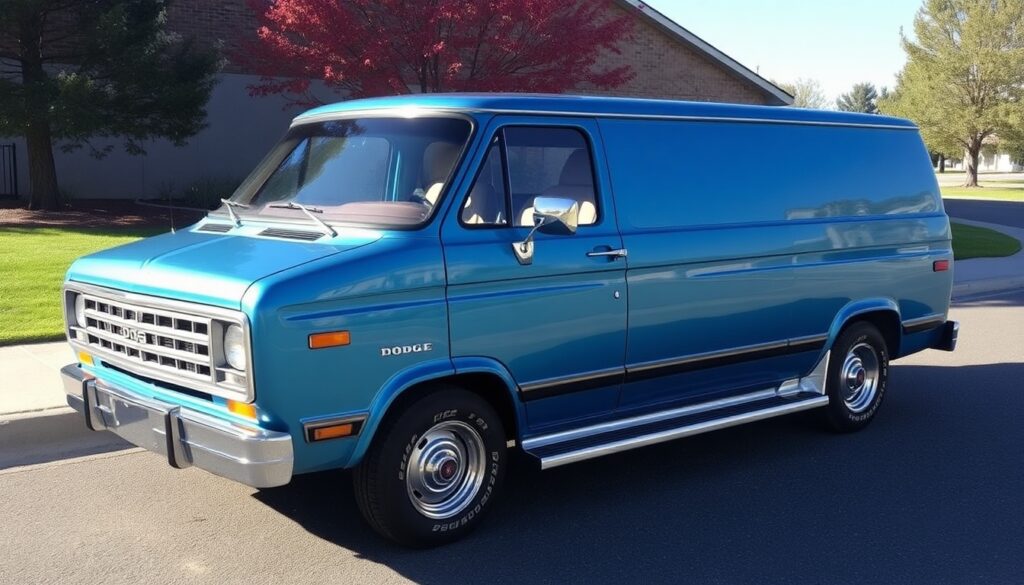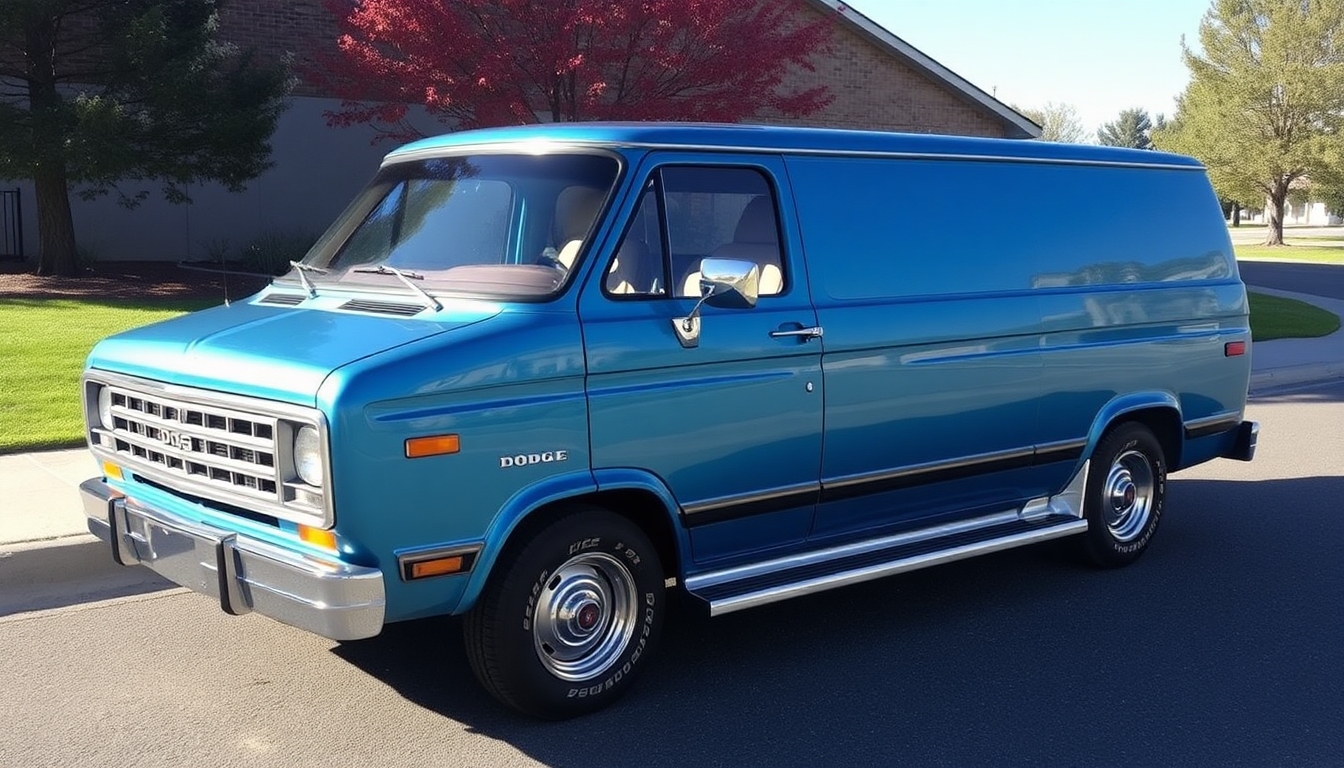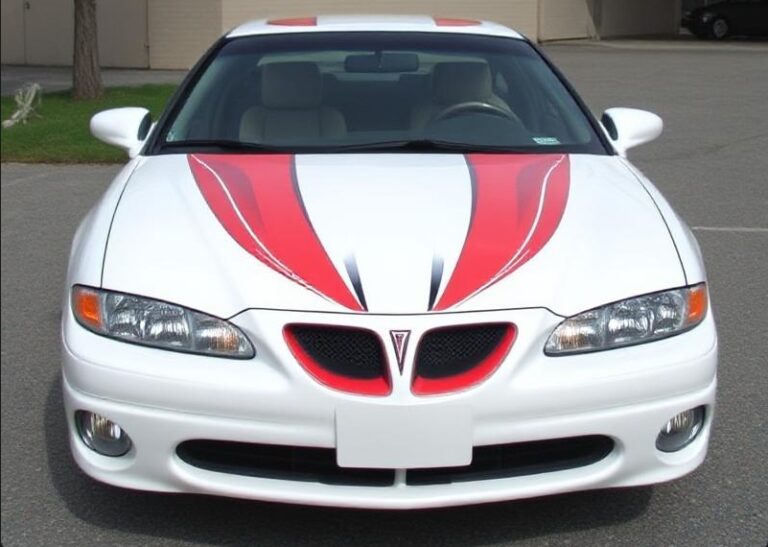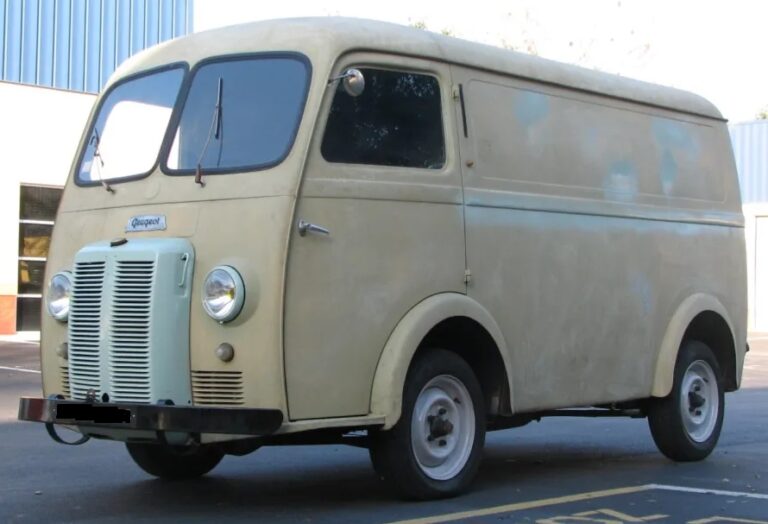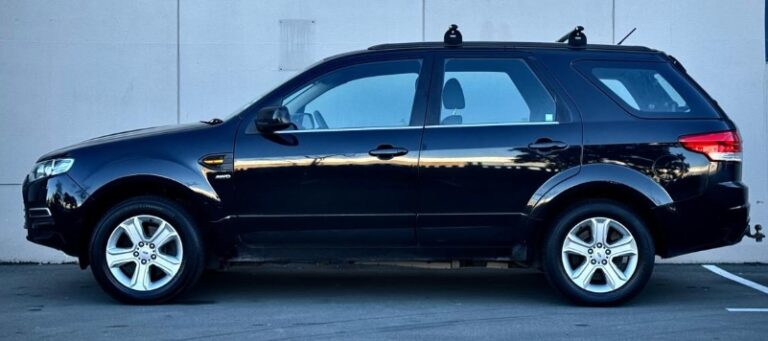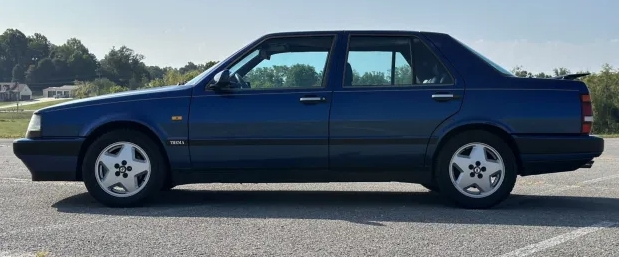The Enduring Workhorse: The Evolution of the Dodge B250 Van
The Dodge B250 van, a stalwart of American transportation for over three decades, carved a significant niche in the commercial and passenger vehicle landscape. Renowned for its robust construction, ample cargo capacity, and adaptable design, the B250 became synonymous with reliability and versatility. From its humble beginnings to its final iteration, the B250 underwent a series of evolutionary changes, reflecting the demands of a changing market and advances in automotive technology. This article delves into the history of the Dodge B250, charting its evolution through the years, detailing its various models, trim levels, and key features that cemented its place in automotive history.
The Genesis: First Generation (1971-1977)
The story of the B250 begins with the introduction of the Dodge Sportsman van in 1971. This marked Chrysler’s entry into the burgeoning full-size van market, dominated by General Motors and Ford. The Sportsman, later renamed the Dodge Ram Van and Wagon (but generally referred to as the Dodge B-Series), shared a common platform with the Dodge D-series pickup trucks, establishing a foundation of durability and reliability from the outset.
The first-generation Dodge B-series vans were distinguished by their relatively boxy design, characterized by a flat front end, a long, flat roofline, and a sliding side door. The B250, positioned as a mid-range model, offered a balance of cargo capacity and maneuverability, making it a popular choice for both commercial and recreational applications.
- Years Produced: 1971-1977
- Model Designations:
- B100 (1/2-ton)
- B200 (3/4-ton)
- B300 (1-ton)
- B250 was introduced mid-run
- Body Styles:
- Cargo Van (Panel Van)
- Passenger Van (Wagon)
- Trim Levels (Varying by Year):
- Base: The entry-level trim offered a functional interior with minimal amenities.
- Custom: This trim level added a few more features, such as upgraded interior trim and upholstery.
- SE (Special Edition): Included extra features like upgraded interior trim, chrome accents, and occasionally, a higher-powered engine.
- Adventurer: A passenger version with added comfort and features, sometimes available on the B250.
Engine Choices: The first-generation B250 offered a range of robust engine options. These included:
- 225 cubic inch (3.7 L) Slant-6 engine.
- 318 cubic inch (5.2 L) V8 engine.
- 360 cubic inch (5.9 L) V8 engine.
Notable Features:
- Robust Construction: Built on a heavy-duty chassis derived from the Dodge D-series pickup, ensuring a high payload capacity.
- Spacious Interior: The van’s design maximized interior space, providing ample room for cargo or passengers.
- Sliding Side Door: A standard feature, facilitating easy loading and unloading of cargo or passengers.
- Availability of Customization: The B-series vans were popular for aftermarket modifications, including camper conversions, custom paint jobs, and interior upgrades.
Second Generation (1978-1993): Refinement and Expansion
The second generation of the Dodge B-series vans, introduced in 1978, represented a significant evolution in design and engineering. While retaining the core principles of durability and functionality, the new generation featured a more streamlined and modern aesthetic.
- Years Produced: 1978-1993
- Model Designations:
- B150 (1/2-ton)
- B250 (3/4-ton)
- B350 (1-ton)
- Body Styles:
- Cargo Van (Panel Van)
- Passenger Van (Wagon)
- Trim Levels (Varying by Year):
- Base: Continued as the entry-level trim.
- Custom: Offered an upgrade in interior materials and appearance.
- SE (Special Edition): Included extra features such as upgraded interior trim, chrome accents, and occasionally, a higher-powered engine.
- Royal SE (Special Edition): The top-of-the-line trim offered premium features.
- Ram Wagon: A passenger version of the B-series, featuring comfortable seating configurations and various trim levels.
- Tradesman: A commercial-focused trim level, often stripped down for maximum utility.
Engine Choices: The engine lineup for the second-generation B250 was expanded and refined:
- 225 cubic inch (3.7 L) Slant-6 engine.
- 318 cubic inch (5.2 L) V8 engine.
- 360 cubic inch (5.9 L) V8 engine (became more common in later years).
Notable Features:
- Redesigned Body: A more aerodynamic and modern design, with a more rounded front end and improved visibility.
- Improved Suspension: Enhanced suspension systems for a smoother ride, especially when heavily loaded.
- Interior Upgrades: Refined interior appointments, including improved seats, dashboard design, and available soundproofing.
- Expanded Engine Options: Offering a wider selection of powerful V8 engines, catering to various needs.
- Fuel Efficiency Improvements: Slight improvements in fuel economy, a crucial factor during periods of rising fuel prices.
The Evolution of the B250
The Dodge B250 underwent gradual changes throughout its second-generation run. These changes included:
- 1981: Introduction of the “Royal SE” trim, offered a more luxurious interior and more standard features.
- Mid-1980s: Increased focus on improving rust protection to enhance durability and longevity.
- Late 1980s: Minor cosmetic updates, including revisions to the grille, headlights, and taillights.
- Engine Refinements: Improvements to engine performance and emissions control systems.
Third Generation (1994-2003): The Final Run
The third generation of the Dodge B-series vans, introduced in 1994, represented the final evolution of the platform. While the overall design remained familiar, the new generation featured significant advancements in safety, performance, and interior design.
- Years Produced: 1994-2003
- Model Designations:
- B1500 (1/2-ton)
- B2500 (3/4-ton)
- B3500 (1-ton)
- Body Styles:
- Cargo Van (Panel Van)
- Passenger Van (Wagon)
- Trim Levels (Varying by Year):
- Base: Standard features, focused on functionality.
- SLT (Special Luxury Touring): The premium trim level, offering a range of comfort and convenience features.
- LE (Luxury Edition): Slightly less luxurious than the SLT, but still offering a high level of features.
- Ram Wagon: Available in various trim levels, designed for passenger transport.
- Tradesman: The commercial-focused trim level, offering a stripped-down interior for maximum utility.
Engine Choices:
- 3.9L Magnum V6 (2000-2003)
- 5.2L Magnum V8
- 5.9L Magnum V8
- 5.9L Cummins Turbo Diesel (Limited availability on B2500)
Notable Features:
- Redesigned Exterior: A more contemporary and aerodynamic design, with a slightly more rounded front end and improved styling.
- Enhanced Safety Features: Inclusion of standard safety features, such as driver-side airbags and anti-lock brakes (ABS), depending on the year.
- Improved Interior: Redesigned interior with a more modern dashboard, improved seating, and upgraded materials.
- Refined Suspension and Handling: Upgraded suspension systems for a smoother ride and improved handling.
- Optional Diesel Engine: Availability of the powerful and fuel-efficient 5.9L Cummins turbo diesel engine (limited availability on B2500), solidifying the B250 as a versatile work vehicle.
- Increased Cargo Capacity: Refinements that enhanced cargo capacity within the van’s overall dimensions.
.
THIS is GOOD stuff if your car is in need:

.
The Decline and Legacy
Production of the Dodge B-series vans, including the B2500, ended in 2003. The discontinuation was largely due to evolving market demands, increasing competition from rivals like Ford and GM, and changing safety regulations. While the B2500’s production run ended in 2003, it left a substantial legacy.
- Dependability: The B250 was known for being one of the most reliable vans in the American market, with a long lifespan and minimal repairs.
- Versatility: The B250 excelled as a work vehicle, a family vehicle, or for outdoor activities like camping. Its versatility allowed it to adapt to the different demands of the end-user.
- Practicality: The B250’s large storage space and practical design made it a favorite of businesses and families.
- Affordability: The Dodge B250 was often an affordable alternative to its competitors.
The B2500’s enduring legacy is reflected in its continued presence on the road, where many well-maintained examples still provide reliable service. It also lives on in the memories of those who owned and relied on these vehicles for a variety of tasks, from hauling cargo to transporting families on road trips. The B2500’s contribution to the American automotive landscape is undeniable, solidifying its place as an enduring workhorse and a testament to American engineering and design. The Dodge B250 represents an era when practicality, durability, and versatility were paramount, and it remains a reminder of a time when vehicles were built to last.
